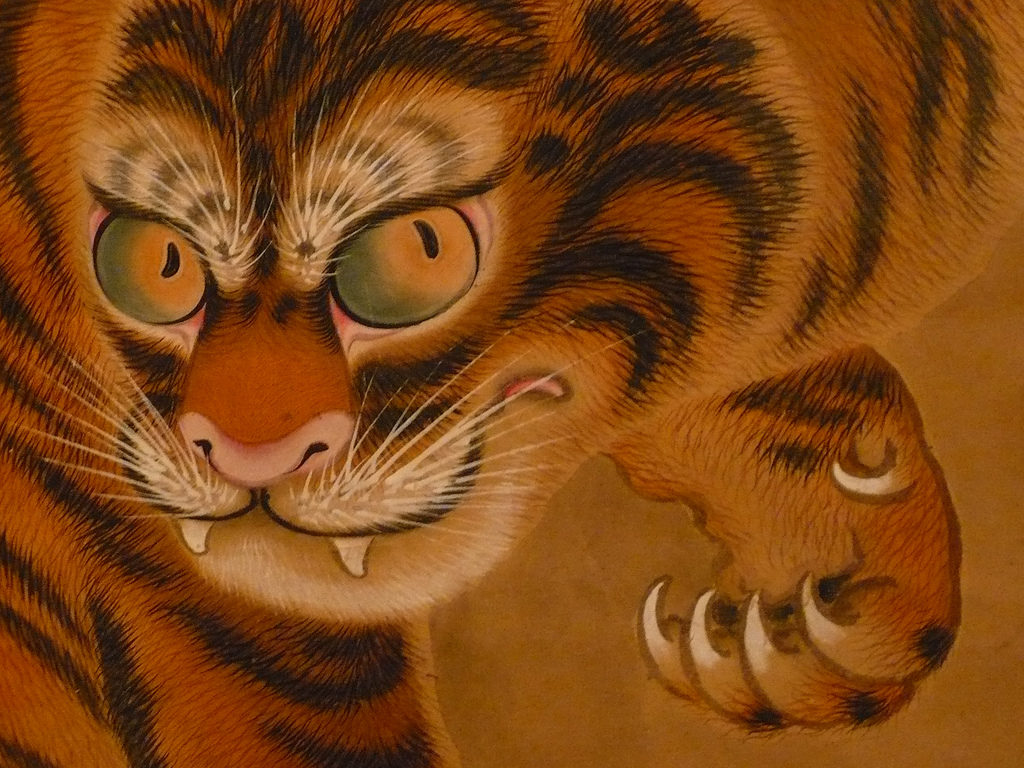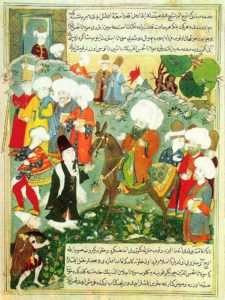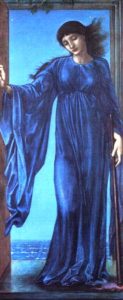
Imagine a black sack thrown over your head. Imagine your arms and legs bound, your body injected with a drug that wipes out thoughts, flattens feelings, and numbs senses. This is depression.
Depression is called the dark night of the soul for good reason. Depression leads us into the night world, a world of shadows, emptiness, and blurry vision. You feel lost, lonely and alone, mired in the quicksand of sadness, vulnerable to thoughts of failure and unworthiness. “We do not see things as they are, we see them as we are,” says a Talmudic expression. Through the lens of depression, the world is saturated with gloom.
One way to understand the lived experience of depression is to see it acted out symbolically in story form. Myths and fairytales show us the collective (and archetypal) universal patterns of the human psyche. I may have “my depression” and you, “yours,” but throughout the ages, worldwide, depression has plagued the human race.
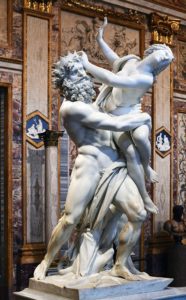 One of the Greek Homeric hymns, the “Hymn to Demeter,” gives an early and vivid picture of depression. It tells the story of Persephone, Demeter and Zeus’s daughter, whom Hades, god of the underworld and brother of Zeus, falls in love with. When Hades asks Zeus’ leave to marry her, Zeus knows Demeter would never agree and says he would neither give nor withhold his consent. So, one day, while Persephone is gathering flowers in a meadow, the ground splits open and Hades springs forth and abducts her, dragging her down into his kingdom against her will. The unwilling bride screams to Zeus, her father, to save her, but he ignores her pleas. Demeter, a goddess herself, hears her daughter’s cries and also begs Zeus for aid, but he refuses to intervene.
One of the Greek Homeric hymns, the “Hymn to Demeter,” gives an early and vivid picture of depression. It tells the story of Persephone, Demeter and Zeus’s daughter, whom Hades, god of the underworld and brother of Zeus, falls in love with. When Hades asks Zeus’ leave to marry her, Zeus knows Demeter would never agree and says he would neither give nor withhold his consent. So, one day, while Persephone is gathering flowers in a meadow, the ground splits open and Hades springs forth and abducts her, dragging her down into his kingdom against her will. The unwilling bride screams to Zeus, her father, to save her, but he ignores her pleas. Demeter, a goddess herself, hears her daughter’s cries and also begs Zeus for aid, but he refuses to intervene.
Separated from her daughter, Demeter rages at the gods for allowing Persephone’s capture and rape. Her grief is “terrible and savage.” Disguised as an old woman, she roams the earth, neither eating, drinking, nor bathing while she searches for her child. During her time of mourning, the earth lies fallow.
“Then she caused a most dreadful and cruel year for mankind over the all-nourishing earth: the ground would not make the seed sprout, for rich-crowned Demeter kept it hid. In the fields the oxen drew many a curved plough in vain, and much white barley was cast upon the land without avail. So she would have destroyed the whole race of man with cruel famine.” “Hymn to Demeter,” translated from Greek by Hugh G. Evelyn-White.
 As Demeter pines for her daughter, so too, during depression, do we yearn for a lost part of ourselves, for it seems that our spirited aliveness has deserted us, our appetite for living kidnapped and dragged down into the house of death. With our instincts blunted, we sink into darkness, and experience the desolation of barren landscape. Like the grieving Demeter, our enthusiasm lost, our life-giving energy depleted, we fall into despair. This feeling of isolation is a signature of depression and runs deep in those who try to articulate their condition and reach out for help.
As Demeter pines for her daughter, so too, during depression, do we yearn for a lost part of ourselves, for it seems that our spirited aliveness has deserted us, our appetite for living kidnapped and dragged down into the house of death. With our instincts blunted, we sink into darkness, and experience the desolation of barren landscape. Like the grieving Demeter, our enthusiasm lost, our life-giving energy depleted, we fall into despair. This feeling of isolation is a signature of depression and runs deep in those who try to articulate their condition and reach out for help.
As the story continues, Zeus’s mounting fear that if he does not reunite mother and daughter nothing will ever grow again on the land finally propels his intervention. He orders Hermes, messenger of the gods, into the underworld to bring Persephone back. Hades is surprisingly gracious in agreeing to her return. Inconsolable during her stay in the underworld, Persephone has yet to eat anything. Before she leaves, Hades urges her to eat at least three pomegranate seeds. Distracted by her joy at leaving, Persephone does so – and thereby consigns herself to return to Hades for three months every year. Had she not eaten the fruit of the underworld, she would have been able to stay with her mother forever.
When we enter the space of depression, it seems we will never “get out,” but as the myth reveals, nature is cyclic. The myth of Demeter and Persephone originates in ancient fertility cults and women’s mysteries, and is associated with harvest and the annual vegetation cycles. Symbolically, for a quarter of the year, while Persephone is in the underworld, lifeless winter prevails. When she returns to earth, spring advances, a time of rebirth. But depressive cycles are not nearly as predictable as the seasons, and yet we might consider our time in the underworld as periods of incubation. While winter’s colorless landscape may suggest death, beneath the ground roots, seeds, and bulbs are dormant, not dead. They are busy with the business of storing nutrients for the coming season.
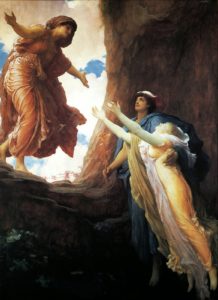 For plants, winter’s stillness is necessary before spring’s renewal. Depression, too, can be viewed as a time of going inward and down into the depths, and can be a generative and creative interlude during which the psyche renews itself in the slower rhythms of dark days. Many artists attest to depressive episodes that prefigure a creative breakthrough. An astonishing number of famous artists, writers, and statesmen as diverse as Charles Darwin, Friedrich Nietzsche, Winston Churchill, Hans Christian Andersen, Abraham Lincoln, and Georgia O’Keefe have described experiencing depression.
For plants, winter’s stillness is necessary before spring’s renewal. Depression, too, can be viewed as a time of going inward and down into the depths, and can be a generative and creative interlude during which the psyche renews itself in the slower rhythms of dark days. Many artists attest to depressive episodes that prefigure a creative breakthrough. An astonishing number of famous artists, writers, and statesmen as diverse as Charles Darwin, Friedrich Nietzsche, Winston Churchill, Hans Christian Andersen, Abraham Lincoln, and Georgia O’Keefe have described experiencing depression.
Little is written about Persephone’s life in the underworld, but one thing is clear, she does not die. Quite the opposite. She is given the honorific title Queen of the Underworld. This suggests her movement “to below” is one of transformation and the acquisition of special gifts and powers. Depression may feel as if parts of us have died, and yet is it possible depression opens us to another level of deep experience, one that matures us and brings new wisdom?
When depression drags us away from the lively day world, we might remember Persephone. The darkness of the underworld may provide a special quality of illumination not possible in the glaring, horn-honking, digitally-frenzied daylight. To consider depression as an expression of loss, grief, mourning, and inevitability of mortality is to bring it into the realm of the human heart. We are more than our genetic predisposition and our biochemistry; we are conscious creatures capable of discovering light in the darkness.
If myths allow us to look into “the heart of the matter,” then neuroscience allows us to peer into the actual matter of our brains. Dr. Richard J. Davidson, founder of the Center for Healthy Minds at the University of Wisconsin, Madison, has made it his life’s work to investigate brain (neuro) plasticity, and how we can improve our wellbeing through the development of certain skills, including meditation.
In his groundbreaking book, The Emotional Life of Your Brain: How Its Unique Patterns Affect the Way You Think, Feel, and Live—and How You Can Change Them, Dr. Davidson and his co-author Sharon Begley offer an in-depth view of how our brains respond to different emotions and provide strategies to help balance or strengthen specific areas of brain circuitry.
 The experience of depression differs from person to person. With the aid of fMRI imaging, Dr. Davidson has been able to pinpoint dysfunctional areas of the brain and correlate them with patient’s symptoms. Under the subheading “A Brain Taxonomy of Depression,” Dr. Davidson identifies three subcategories of depression. One group of depressed patients had difficulty recovering from adversity while another group had difficulty regulating their emotions in a context-appropriate way. The third group was unable to sustain positive emotions. Different patterns of brain activity were noted for each group.
The experience of depression differs from person to person. With the aid of fMRI imaging, Dr. Davidson has been able to pinpoint dysfunctional areas of the brain and correlate them with patient’s symptoms. Under the subheading “A Brain Taxonomy of Depression,” Dr. Davidson identifies three subcategories of depression. One group of depressed patients had difficulty recovering from adversity while another group had difficulty regulating their emotions in a context-appropriate way. The third group was unable to sustain positive emotions. Different patterns of brain activity were noted for each group.
Dr. Davidson is optimistic. His book offers a questionnaire to help readers figure out their emotional “style” and gives exercises that build skills to improve brain functioning. Sufferers of depression need hope. Dr. Davidson’s excitement about what he is learning in the laboratory is palpable and his hope contagious.
Archetypal myths and brain science may seem disconnected, but each presents its own form of wisdom, one through images and story, the other through investigatory science. Demeter’s suffering, the barren land, Persephone’s descent into darkness lodge in our imagination and dreams and recommend that we look into our own lives to discover the source of our grief. Neuroscience advances our knowledge of brain anatomy and its relationship to our feelings and emotions. Each perspective provides a potentially valuable way to examine and understand our experience of depression.
This post appeared in a slightly different form on Dale’s blog on Psychology Today. You can find all of Dale’s blog posts for Psychology Today at
